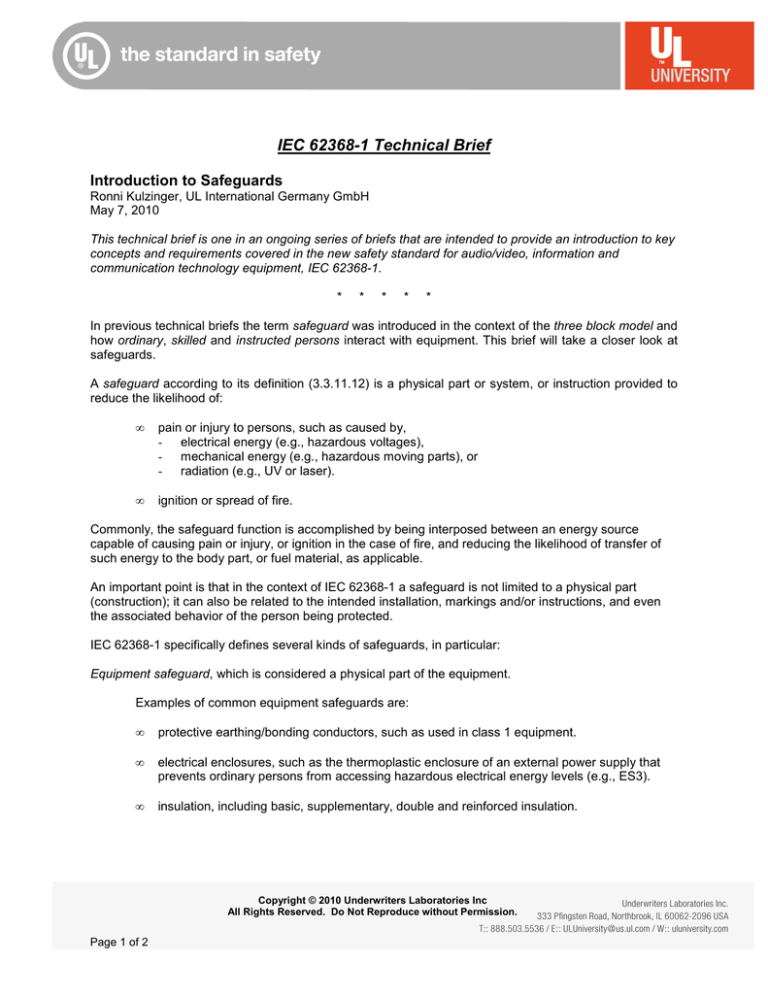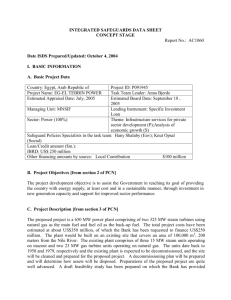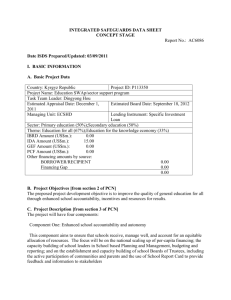
IEC 62368-1 Technical Brief
Introduction to Safeguards
Ronni Kulzinger, UL International Germany GmbH
May 7, 2010
This technical brief is one in an ongoing series of briefs that are intended to provide an introduction to key
concepts and requirements covered in the new safety standard for audio/video, information and
communication technology equipment, IEC 62368-1.
*
*
*
*
*
In previous technical briefs the term safeguard was introduced in the context of the three block model and
how ordinary, skilled and instructed persons interact with equipment. This brief will take a closer look at
safeguards.
A safeguard according to its definition (3.3.11.12) is a physical part or system, or instruction provided to
reduce the likelihood of:
•
pain or injury to persons, such as caused by,
- electrical energy (e.g., hazardous voltages),
- mechanical energy (e.g., hazardous moving parts), or
- radiation (e.g., UV or laser).
•
ignition or spread of fire.
Commonly, the safeguard function is accomplished by being interposed between an energy source
capable of causing pain or injury, or ignition in the case of fire, and reducing the likelihood of transfer of
such energy to the body part, or fuel material, as applicable.
An important point is that in the context of IEC 62368-1 a safeguard is not limited to a physical part
(construction); it can also be related to the intended installation, markings and/or instructions, and even
the associated behavior of the person being protected.
IEC 62368-1 specifically defines several kinds of safeguards, in particular:
Equipment safeguard, which is considered a physical part of the equipment.
Examples of common equipment safeguards are:
•
protective earthing/bonding conductors, such as used in class 1 equipment.
•
electrical enclosures, such as the thermoplastic enclosure of an external power supply that
prevents ordinary persons from accessing hazardous electrical energy levels (e.g., ES3).
•
insulation, including basic, supplementary, double and reinforced insulation.
Copyright © 2010 Underwriters Laboratories Inc
All Rights Reserved. Do Not Reproduce without Permission.
Page 1 of 2
Installation safeguard, which is a physical part of a man-made installation, such as a required connection
to the building’s protective earthing (to allow an equipment protective earthing conductor to meet the
criteria for a supplementary safeguard).
Instructional safeguard, which typically is a visual indicator using symbols or words or both, to indicate
that there is a potential hazard that could cause pain or injury to persons, and is intended to invoke a
specific behavior to avoid such a hazard. Common instructional safeguards are safety markings, such as
on household document shredders.
Precautionary safeguard, which is an instructed behavior existing when instructed persons are trained or
supervised by skilled persons.
Skill safeguard, which is based on the education, training, knowledge and experience of the skilled
person, and as a result fewer safeguards typically are needed to protect against contact with energy
sources capable of causing injury.
In practice, safeguard selection will take into account the nature of the energy source, the intended
user(s), the functional requirements of the equipment, and related considerations.
Like in other safety standards, a hierarchy of safeguards exists depending on the level of protection
required, and a safeguard can be either a single element or a set of elements.
•
A basic safeguard is the first level safeguard to protect both under normal operating
conditions and abnormal operating conditions. A common basic safeguard is basic insulation
between ES3 energy sources (e.g., Primary circuits) and dead metal enclosures.
•
A supplementary safeguard is the second level of protection applied in addition to the basic
safeguard that becomes operational if the basic safeguard fails. Typical supplementary
safeguards in class I units are equipment safeguards, such as protectively earthed accessible
enclosure parts.
•
A double safeguard is the sum of the applied basic and supplementary safeguards, required
when two levels of protection are required by the Standard (e.g., Class II equipment) and is
operational under normal, abnormal operating and single fault conditions.
•
A reinforced safeguard is a single safeguard, equivalent to a double safeguard, which also is
operational during normal, abnormal operating and single fault conditions.
The order of preference for providing safeguards is (a) equipment safeguards; (b) installation safeguards;
and then (c) instructional safeguards, since in most cases it is preferable to design safety into the
equipment, rather than rely on the intended installation or instructions (and associated human behavior).
*
*
*
*
*
In this continuing series of technical briefs, additional key topics associated with the new IEC 62368-1
standard will be reviewed similarly.
Copyright © 2010 Underwriters Laboratories Inc
All Rights Reserved. Do Not Reproduce without Permission.
Page 2 of 2






